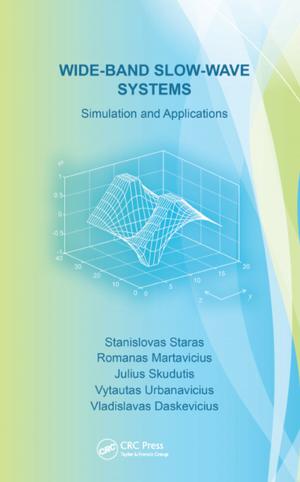Mechanics of Elastic Waves and Ultrasonic Nondestructive Evaluation
Nonfiction, Science & Nature, Technology, Material Science, Science, Physics, Mechanics, Engineering| Author: | Tribikram Kundu | ISBN: | 9781351849395 |
| Publisher: | CRC Press | Publication: | July 9, 2019 |
| Imprint: | CRC Press | Language: | English |
| Author: | Tribikram Kundu |
| ISBN: | 9781351849395 |
| Publisher: | CRC Press |
| Publication: | July 9, 2019 |
| Imprint: | CRC Press |
| Language: | English |
Summary:
This book presents necessary background knowledge on mechanics to understand and analyze elastic wave propagation in solids and fluids. This knowledge is necessary for elastic wave propagation modeling and for interpreting experimental data generated during ultrasonic nondestructive testing and evaluation (NDT&E). The book covers both linear and nonlinear analyses of ultrasonic NDT&E techniques. The materials presented here also include some exercise problems and solution manual. Therefore, this book can serve as a textbook or reference book for a graduate level course on elastic waves and/or ultrasonic nondestructive evaluation. It will be also useful for instructors who are interested in designing short courses on elastic wave propagation in solids or NDT&E.
The materials covered in the first two chapters provide the fundamental knowledge on linear mechanics of deformable solids while Chapter 4 covers nonlinear mechanics. Thus, both linear and nonlinear ultrasonic techniques are covered here. Nonlinear ultrasonic techniques are becoming more popular in recent years for detecting very small defects and damages. However, this topic is hardly covered in currently available textbooks. Researchers mostly rely on published research papers and research monographs to learn about nonlinear ultrasonic techniques. Chapter 3 describes elastic wave propagation modeling techniques using DPSM. Chapter 5 is dedicated to an important and very active research field – acoustic source localization – that is essential for structural health monitoring and for localizing crack and other type of damage initiation regions.
Features
• Introduces Linear and Nonlinear ultrasonic techniques in a single book.
• Commences with basic definitions of displacement, displacement gradient, traction and stress.
• Provides step by step derivations of fundamental equations of mechanics as well as linear and nonlinear wave propagation analysis.
• Discusses basic theory in addition to providing detailed NDE applications.
• Provides extensive example and exercise problems along with an extensive solutions manual.
Summary:
This book presents necessary background knowledge on mechanics to understand and analyze elastic wave propagation in solids and fluids. This knowledge is necessary for elastic wave propagation modeling and for interpreting experimental data generated during ultrasonic nondestructive testing and evaluation (NDT&E). The book covers both linear and nonlinear analyses of ultrasonic NDT&E techniques. The materials presented here also include some exercise problems and solution manual. Therefore, this book can serve as a textbook or reference book for a graduate level course on elastic waves and/or ultrasonic nondestructive evaluation. It will be also useful for instructors who are interested in designing short courses on elastic wave propagation in solids or NDT&E.
The materials covered in the first two chapters provide the fundamental knowledge on linear mechanics of deformable solids while Chapter 4 covers nonlinear mechanics. Thus, both linear and nonlinear ultrasonic techniques are covered here. Nonlinear ultrasonic techniques are becoming more popular in recent years for detecting very small defects and damages. However, this topic is hardly covered in currently available textbooks. Researchers mostly rely on published research papers and research monographs to learn about nonlinear ultrasonic techniques. Chapter 3 describes elastic wave propagation modeling techniques using DPSM. Chapter 5 is dedicated to an important and very active research field – acoustic source localization – that is essential for structural health monitoring and for localizing crack and other type of damage initiation regions.
Features
• Introduces Linear and Nonlinear ultrasonic techniques in a single book.
• Commences with basic definitions of displacement, displacement gradient, traction and stress.
• Provides step by step derivations of fundamental equations of mechanics as well as linear and nonlinear wave propagation analysis.
• Discusses basic theory in addition to providing detailed NDE applications.
• Provides extensive example and exercise problems along with an extensive solutions manual.















